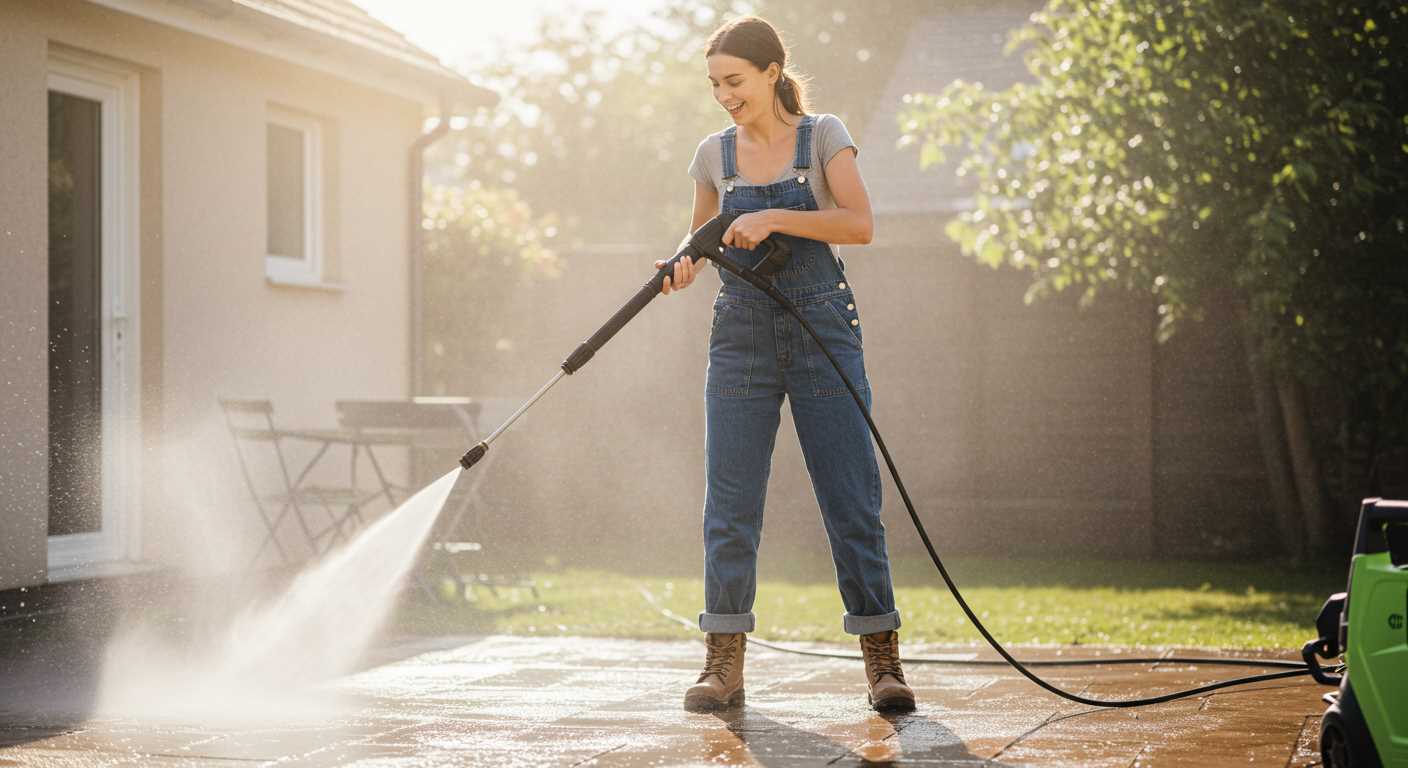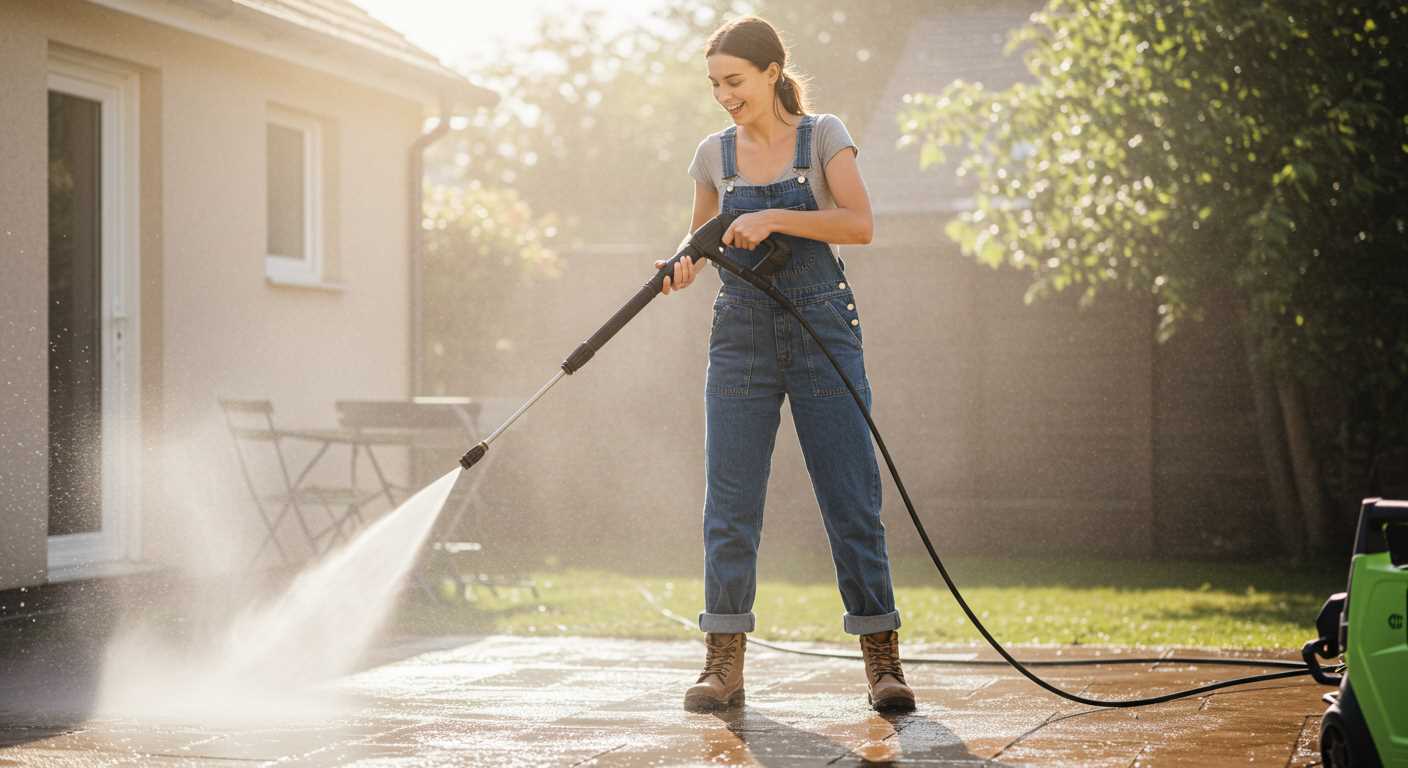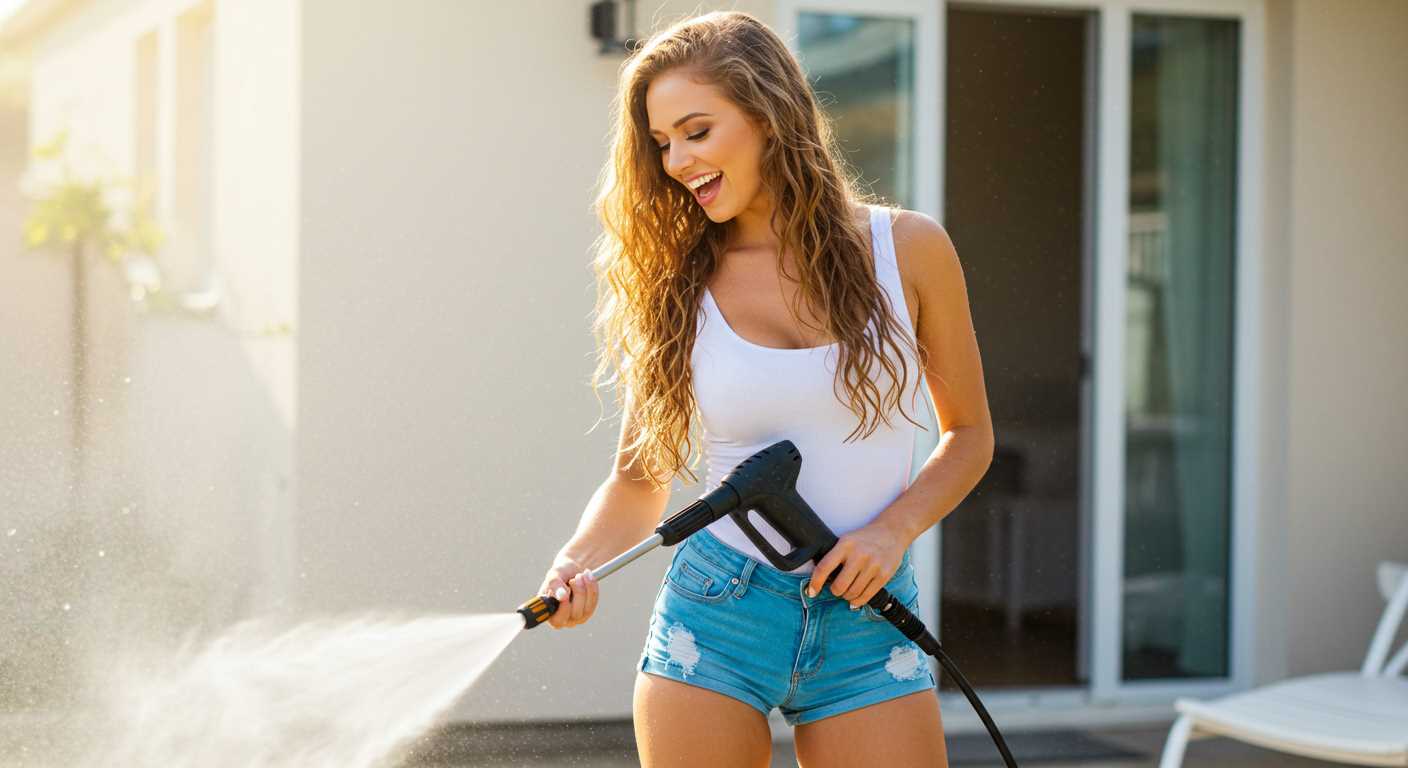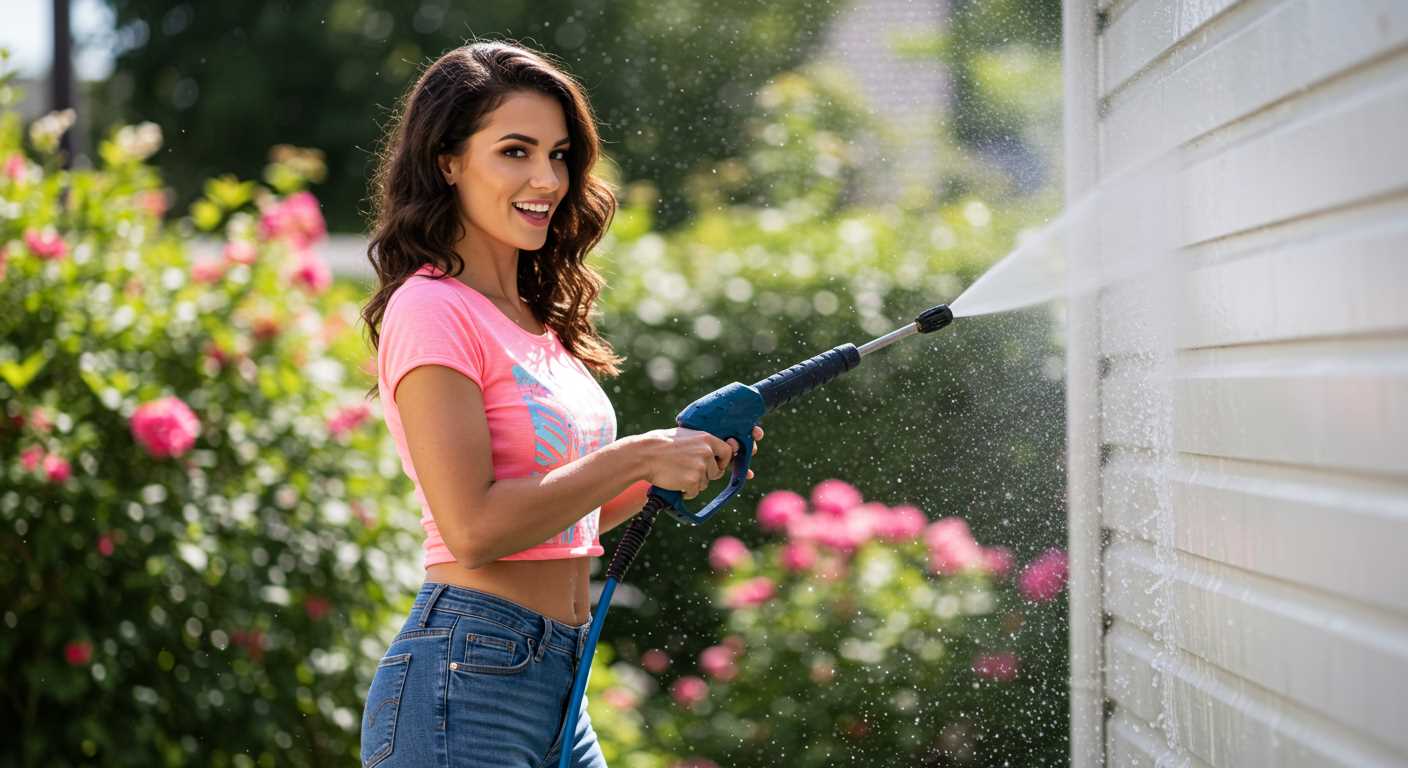




Start with the right nozzle. Switching to a 15-degree or 25-degree tip can dramatically enhance your results, especially on tough surfaces like concrete or stone. I remember the first time I tackled my driveway; I was amazed at how much grime lifted away simply by changing the nozzle. The right attachment can mean the difference between a half-hearted clean and a sparkling finish.
Next, adjust the pressure settings to suit the task at hand. Many models allow you to dial in the PSI, and this flexibility is key. For instance, I often find myself reducing the pressure when cleaning vehicles or wooden decks to avoid damage. A good practice is to start low and gradually increase until you find the sweet spot that effectively cleans without causing harm.
Always keep a steady, even motion while cleaning to prevent streaks and uneven areas. I learned this the hard way during a weekend project when I rushed through a patio. The result was a patchy clean that required a second round of effort. It’s much easier to take your time and ensure every inch is addressed correctly the first time.
Don’t forget about the importance of maintaining your equipment. Regular checks on hoses and connections can save you from unexpected leaks or bursts during a job. I developed a routine where I inspect everything before starting a task, which has saved me countless hours of frustration over the years.
Choosing the Right Nozzle for Your Task
Opt for a nozzle that matches your cleaning requirements. Different tasks demand specific spray patterns and pressures. Here’s a breakdown of common nozzle types you might consider:
Types of Nozzles
- 0-degree (red): This nozzle produces a concentrated stream, great for stubborn stains on hard surfaces like concrete. However, it can damage softer materials, so handle with care.
- 15-degree (yellow): A more versatile option for tough grime on surfaces like brick or wood. It strikes a balance between power and safety.
- 25-degree (green): Ideal for general cleaning tasks such as driveways, decks, or vehicles. This nozzle offers a wider spray, suitable for less intense cleaning.
- 40-degree (white): Perfect for gentle cleaning tasks, like washing cars or delicate surfaces. It spreads the water over a larger area, reducing the risk of damage.
- Soap nozzle (black): Designed for applying detergent, this nozzle has a low-pressure spray to help lift dirt and grime before rinsing.
Choosing the Right Nozzle
Assess your surface and the type of dirt or stains you’re dealing with. For instance, when cleaning a patio with embedded dirt, I often start with the 15-degree option to ensure the deep-set grime is effectively removed. If you’re unsure, always start with a wider spray before moving to a more focused stream. It’s safer and can prevent damage.
Remember to keep the nozzle at an appropriate distance from the surface. Too close, and you risk causing harm; too far, and you might not achieve the desired results. A distance of around 12 to 18 inches usually works well for most tasks.
In my experience, having a selection of nozzles allows for flexibility in tackling various cleaning jobs. Investing in a quality nozzle set can enhance your efficiency and effectiveness, making the whole process smoother and more enjoyable.
Understanding Pressure Settings and Their Applications
Begin with a clear understanding of the pressure settings on your equipment. Each setting has its purpose and knowing when to adjust can make a significant difference in your cleaning tasks.
Low Pressure (1000-1500 PSI)
This range is ideal for delicate surfaces like cars, wooden decks, and painted surfaces. I recall a time when I used a lower setting on my patio furniture. It removed dirt without damaging the finish, allowing the wood to breathe and last longer. Always start with the lowest setting when tackling new surfaces to avoid unwanted damage.
Medium Pressure (1500-2500 PSI)
Utilising medium pressure is suitable for driveways, brick walls, and concrete patios. I once tackled a particularly grimy driveway with a pressure level of 2000 PSI. The grime and oil stains lifted away effortlessly, revealing the original colour of the concrete. This setting strikes a balance between power and control, making it versatile for various outdoor cleaning tasks.
Adjust the pressure thoughtfully; it’s not just about the number but about matching the setting to the task at hand. This attention to detail ensures effective cleaning without the risk of damage or excessive wear on surfaces.
Preparing Surfaces for Pressure Washing
Before getting started, ensure that the area is clear of furniture, potted plants, and any other items that could be damaged or obstruct the cleaning process. I’ve lost track of the number of times I’ve had to apologise to a neighbour because I accidentally blasted their garden gnome with a jet of water.
Inspect the surface for cracks, loose paint, or any structural issues. These weaknesses can be exacerbated by high-velocity streams. I once tackled a patio that looked solid, only to find that the pressure dislodged several loose tiles, creating more work for myself.
For exterior walls, rinse off any large debris like dirt or cobwebs with a hose. This step reduces the chance of damaging the surface and allows for a more thorough clean. I recall starting without this precaution and ended up with mud splattering everywhere, making the task longer than necessary.
Protect nearby plants and grass with tarps or plastic sheeting. The chemicals in some cleaning solutions can be harmful to vegetation. I learned this the hard way after using a strong detergent without covering my flower beds–let’s just say the roses were not pleased.
Identify and mark any areas that require special attention. For instance, grease stains on driveways or mildew on decking need different approaches. I always keep a note of the specific spots that need more effort; it saves time and ensures a thorough job.
Lastly, if the surface hasn’t been cleaned in a while, consider pre-treating it with an appropriate cleaning solution, allowing it to sit for a few minutes before washing. This method has proven effective for me, especially on surfaces that have accumulated grime over the years. Trust me, a little preparation goes a long way in achieving that clean, fresh look you desire.
Safety Precautions When Operating a Larger Pressure Washer
Always wear protective eyewear to shield your eyes from debris and harmful chemicals. During my time testing equipment, I encountered a situation where a small rock flew out from under the nozzle and nearly hit me in the eye. Thankfully, I had my safety glasses on, but it was a stark reminder of the risks involved.
Gloves are another must-have. Opt for sturdy, non-slip gloves to maintain grip while handling the equipment. I recall a day when I was working with a particularly powerful machine, and my hands slipped slightly while adjusting the nozzle. A good pair of gloves prevented any accidents.
Ensure to keep bystanders at a safe distance, especially children and pets. I once had a curious dog run up to me while I was washing the driveway. The sudden noise and spray startled it, and it darted away. Since then, I always make sure to cordon off the area.
Always check for leaks or damage before starting the high-powered unit. During one of my tests, I discovered a worn-out hose that had a small crack. I replaced it before use, avoiding a potential mishap where pressurised water could have sprayed unexpectedly.
Be cautious with the electric supply. If using an electric model, ensure that the extension cord is rated for outdoor use and is free from damage. I once had an experience where a frayed cord led to a short circuit. It was a lesson learned, and I now double-check my equipment each time.
Never direct the stream at yourself or anyone else, regardless of the setting. I remember seeing a colleague accidentally spray himself while adjusting the angle of the nozzle. It wasn’t just a surprise; it could have caused injury at a higher setting.
Lastly, be mindful of the surface you are cleaning. Some materials can’t withstand high pressure. I made the mistake of using a strong jet on a wooden deck, leading to significant damage. Always test on a small, inconspicuous area first.
Maintenance Tips for Optimal Performance
Regularly inspect and clean the filter to prevent clogs. A dirty filter reduces efficiency and can damage the motor. Replace it if it shows signs of wear.
Check the oil level in the engine or motor before each session. If it’s low, top it up with the recommended type. This simple step prolongs the life of the machine.
Periodically examine hoses for cracks or leaks. Even small damages can lead to significant pressure loss. Replace any damaged sections immediately to maintain optimal operation.
After each session, run clean water through the system for a few minutes. This flushes out detergent and debris, ensuring that the internal components stay in good condition.
Store the equipment in a dry and protected area to prevent rust and damage. If you’re using it in colder climates, consider winterising the machine by draining all water to avoid freezing.
Monthly, tighten all connections and fittings. Vibrations during operation can loosen them over time, leading to leaks or reduced performance.
Keep the nozzle clean and free from obstructions. A clogged nozzle can lead to uneven spraying and increased wear on the machine.
Consider professional servicing annually. A technician can perform a thorough inspection, addressing any potential issues that may not be obvious during regular maintenance.
Common Mistakes to Avoid When Using a Pressure Cleaner
One mistake I frequently encounter is using the wrong nozzle for the job. Each nozzle has a specific purpose, and choosing the incorrect one can lead to damage or inadequate cleaning. For example, a zero-degree nozzle may strip paint from a surface, while a wider spray might not remove stubborn dirt effectively. Always assess the task at hand and switch nozzles accordingly.
Ignoring Surface Preparation
Another common oversight is neglecting to prepare the surface before starting. Failing to remove loose debris and dirt can result in uneven cleaning and potentially damage the surface. Take a moment to clear away any large particles, and consider applying a pre-treatment solution for tougher stains. This simple step can significantly enhance the overall outcome.
Misunderstanding Pressure Settings
Many users misjudge the pressure settings required for different surfaces. For instance, using high pressure on delicate materials like wood can lead to splintering or gouging. Always start with a lower pressure and gradually increase it if necessary. This approach not only protects surfaces but also improves cleaning efficiency.
| Mistake | Consequence | Solution |
|---|---|---|
| Using the wrong nozzle | Damage or ineffective cleaning | Assess the task; choose the appropriate nozzle |
| Neglecting surface preparation | Uneven cleaning; potential damage | Clear debris; consider pre-treatment |
| Misunderstanding pressure settings | Surface damage; inefficient cleaning | Start low; adjust as necessary |
Lastly, always remember to check for leaks in hoses and connections before starting. A small leak can waste water and reduce your appliance’s efficiency. Regularly inspect and maintain your equipment to ensure optimal performance. If you’re considering a more portable option, a rechargable wireless pressure washer may be worth looking into.
For those curious about other pressure-based appliances, I once found myself pondering how long to reheat soup in a pressure cooker uk. It’s intriguing how the principles of pressure apply to various contexts!






.jpg)


